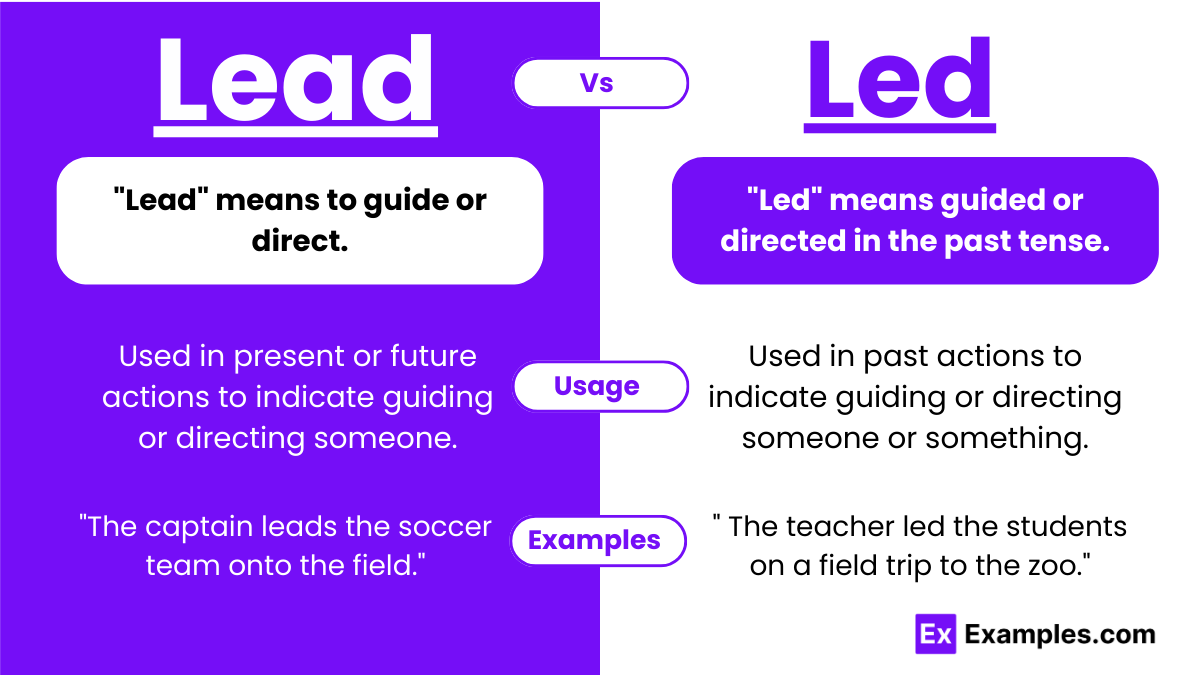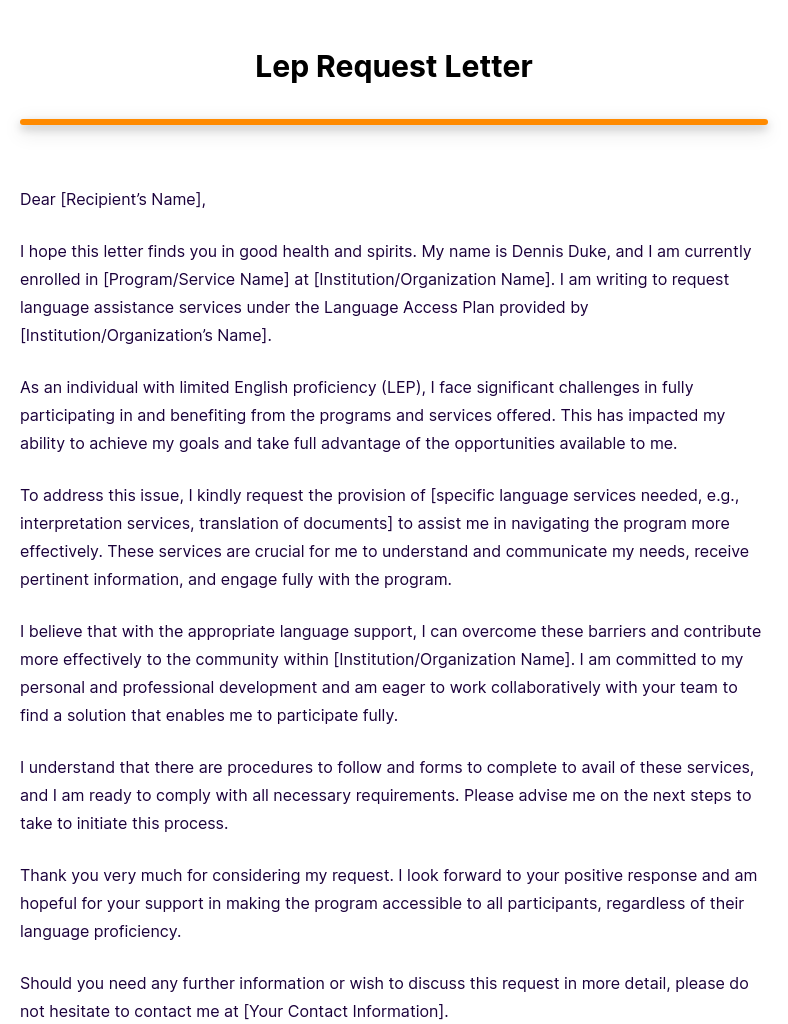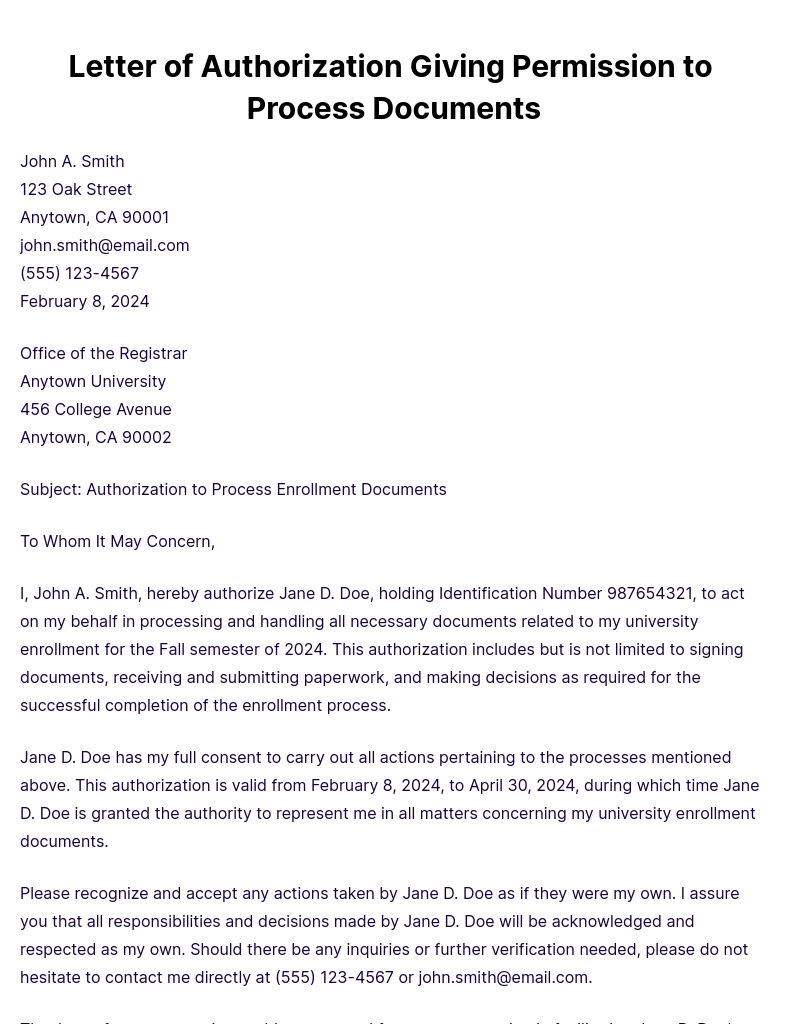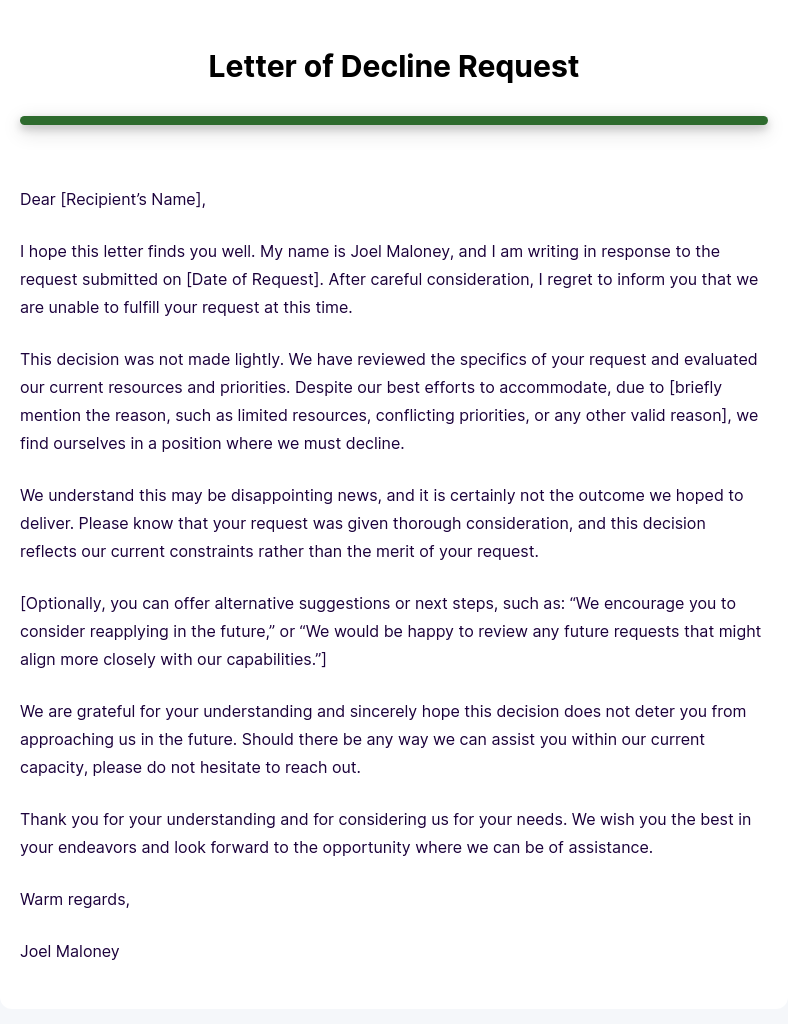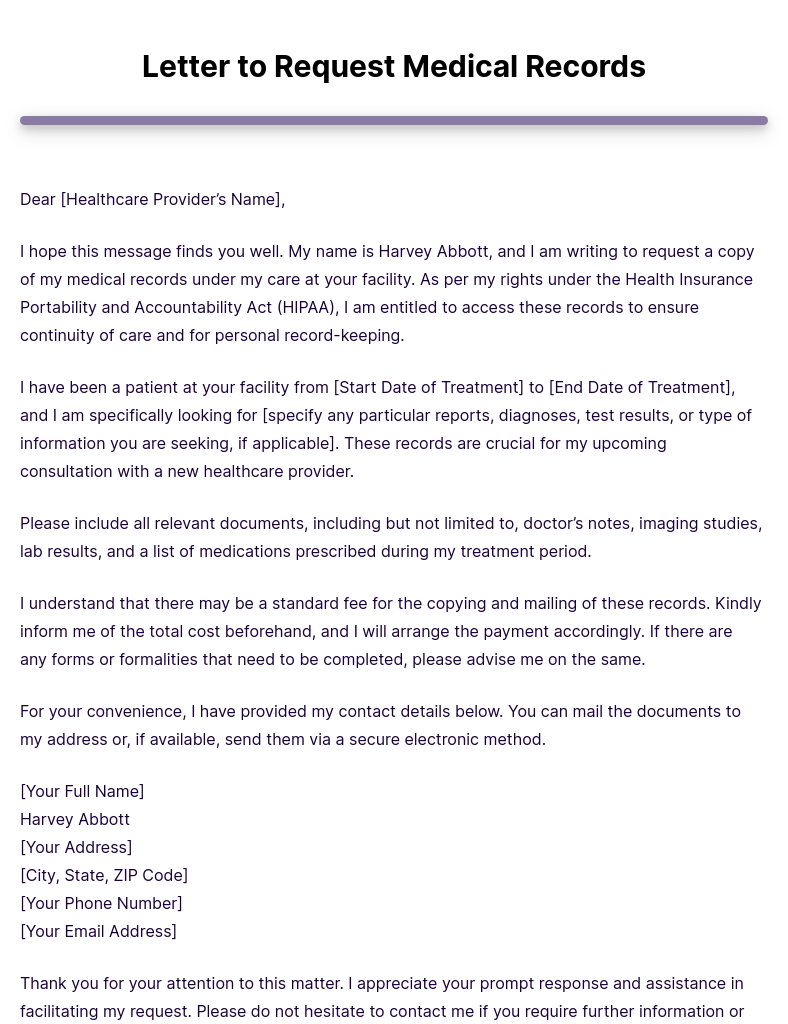“Lead” (rhymes with bleed) is a verb meaning to direct, while “led” (rhymes with red) is its past tense. On the other hand, “lead” (rhymes with red) is a noun referring to a soft metal. Confusion often arises because “read” follows a different pattern. Remember, “led” is the correct past tense of “lead,” and “lead” is commonly misspelled in its past tense form.
Lead and Led – Meanings
- Lead : In its verb form (rhymes with “bleed”), refers to the act of directing or guiding something or someone along a particular course or path. It involves taking charge or being in control of a situation. As a noun, lead (rhymes with “red”) denotes a soft, malleable metal that was once commonly used in various applications such as pencils, paint, and plumbing.
- Led : Led (rhymes with “red”) is the past tense form of the verb “lead.” It indicates that someone or something has been directed or guided by someone else in the past. For instance, “She led the team to victory” means that she directed or guided the team toward success.
Summary
How To Pronounce Lead and Led
- Lead: It is pronounced “leed” / “/liːd/” when it’s a verb.
- Led: It is always pronounced “led” / “/led/“.
Differences Between Lead and Led
| Aspect | Lead | Led |
|---|---|---|
| Verb Form | Present | Past |
| Function | Directing, guiding | Indicating past direction, guidance |
| Sentence Role | Subject, verb | Main verb |
| Context | Present actions | Past actions |
| Conjugation | Infinitive: lead, Past: led | Past tense only |
| Grammatical Usage | Varied (noun or verb) | Primarily past tense of “lead” |
| Semantic Role | Active | Passive |
How To Remember The Differences Between Lead vs Led
- Sound Association: Associate “lead” (rhymes with “bleed”) with present actions, and “led” (rhymes with “red”) with past actions.
- Visualize Actions: Picture yourself leading a group for “lead” and visualize someone who led a group in the past for “led.”
- Use Context: Think about whether the action is happening now (lead) or if it already happened (led).
- Link to Examples: Recall sentences or phrases where you’ve seen each form used correctly to reinforce their meanings.
- Practice: Regularly use both words in sentences to solidify their distinctions in your memory.
The Past Tense of Lead
- The past tense of the verb “lead” is “led.”
- “Led” is used to indicate actions or events that occurred in the past.
- It shows that someone or something guided or directed others in the past.
- For example, “She led the team to victory” indicates that she directed the team in the past.
When To Use Lead and Led

Usage of Lead
- “Lead” is used in the present tense to describe actions that are ongoing or will occur in the future.
- It indicates guidance, direction, or being in charge of a group or activity at the present time.
- Often used to denote leadership roles, decision-making, or influencing others in real-time situations.
- Commonly found in descriptions of ongoing processes, current events, or future plans.
Usage of Led
- “Led” is the past tense form of the verb, used to describe actions that have already taken place in the past.
- It signifies that someone assumed the role of guiding or directing others at a specific time in the past.
- Typically employed when narrating past events, recounting historical achievements, or describing completed tasks.
How To Use Lead and Led
Lead
- Verb Usage:
- “Lead” is employed in the present tense to describe actions happening now or in the future.
- It suggests guiding, directing, or taking charge of a group, project, or situation presently.
- Noun Usage:
- “Lead” can also function as a noun, referring to a position of authority or a person who is in charge.
- Adjective Usage:
- In some contexts, “lead” can act as an adjective to describe something that is foremost or ahead of others.
Led
- Verb Usage:
- “Led” is the past tense form of “lead,” indicating actions that have already occurred in the past.
- It implies that someone guided, directed, or took charge of a situation at a specific time in the past.
- Adjective Usage:
- Occasionally, “led” is used as an adjective, particularly in the context of light-emitting diodes (LEDs).
Lead and Led – Examples

Lead Examples
- She leads the team during practice every day.
- Can you lead us to the park?
- The tour guide leads visitors through the museum.
- He leads the discussion in class.
- The captain leads the soccer team onto the field.
Led Examples
- He led his classmates on a nature walk.
- They led the project to success.
- She led the choir in singing the national anthem.
- The explorer led the expedition to the top of the mountain.
- The teacher led the students on a field trip to the zoo.
Synonyms for Lead and Led
| Lead | Led |
|---|---|
| Guide | Guided |
| Direct | Directed |
| Manage | Managed |
| Supervise | Supervised |
Exercises
- She _____ the team to victory in the championship.
- Regular exercise can _____ to a healthier lifestyle.
- She _____ the discussion during the meeting.
- The tour guide _____ the group through the historic city.
- The path is _____ with obstacles, but they will persevere.
Answer
- leads
- lead
- led
- led
- leads
FAQ’S
Is Lead or Led Correct?
“Led” is the past tense of “lead.” Use “lead” for present or future actions and “led” for actions that occurred in the past.
Is it Currently Led or Lead?
“Lead” is correct for present actions. “Led” is used for actions in the past. So, it’s “lead” for current actions.
Is Led the Same as Lead?
No, they are different forms of the same verb. “Lead” is present tense, and “led” is past tense.
Is it Led or Lead on a Resume?
It depends on the context. Use “lead” if referring to your current role. Use “led” for past experiences.
What Makes This So Hard to Remember?
The pronunciation and irregularity contribute to confusion. Remember, “lead” (present) rhymes with “bleed,” and “led” (past) rhymes with “red”.
Can “lead” and “led” be used interchangeably?
No, they represent different tenses of the same verb. “Lead” is present tense, while “led” is the past tense.



